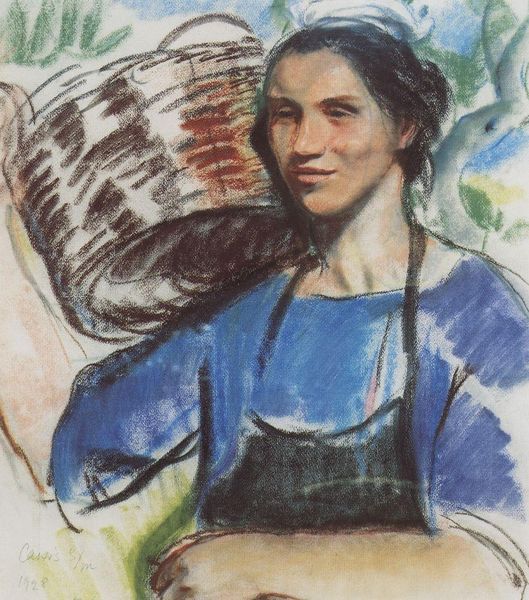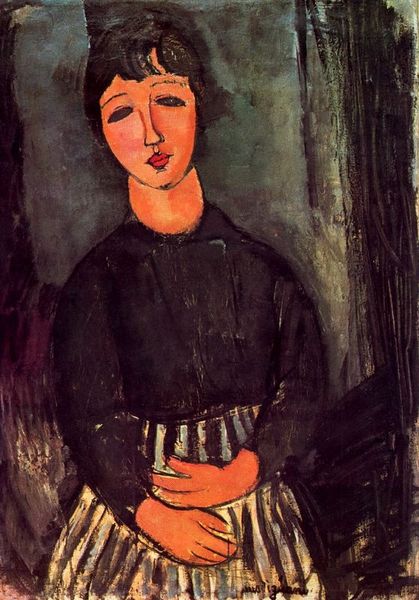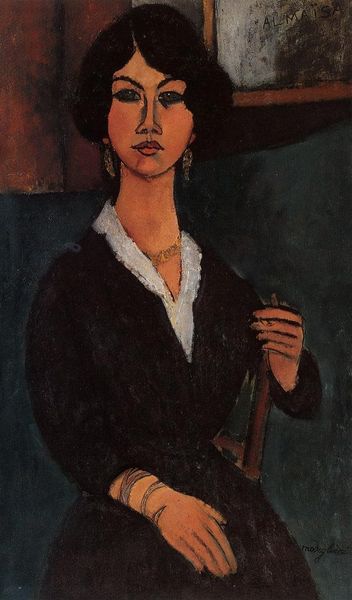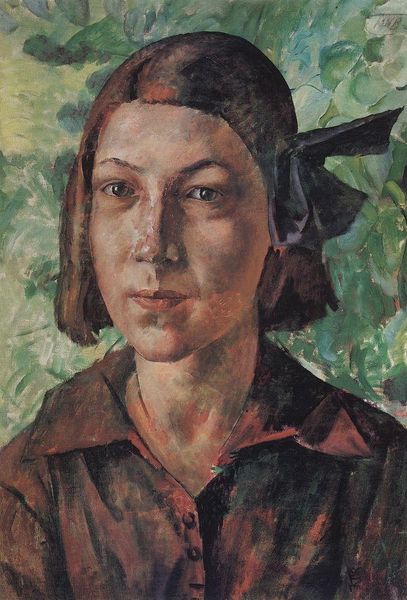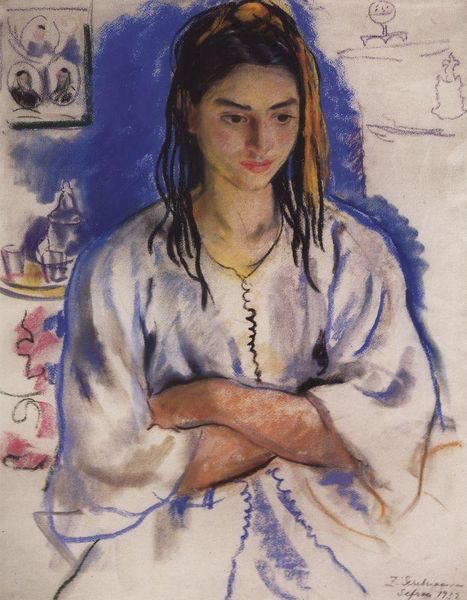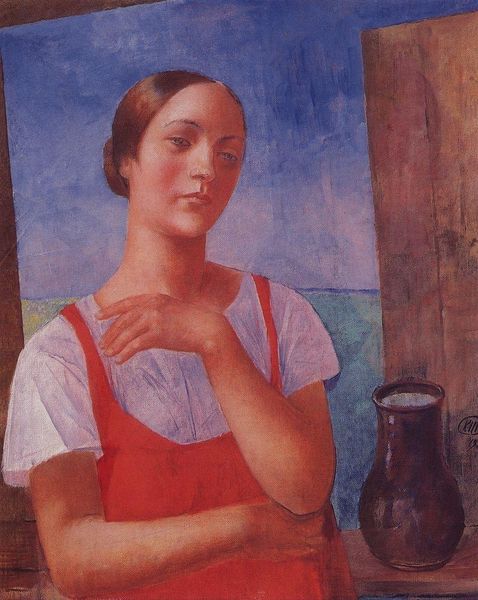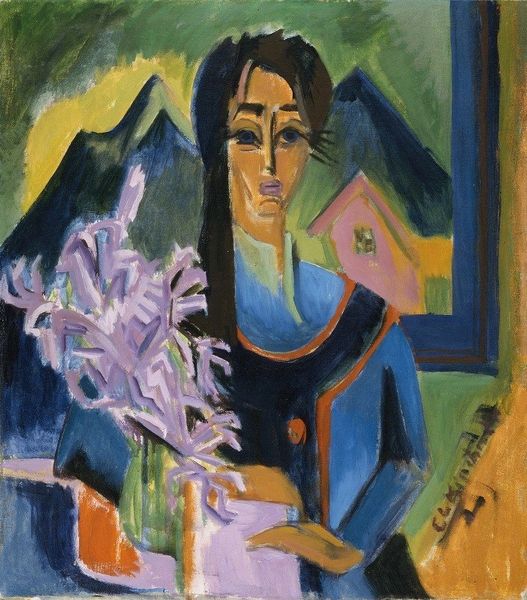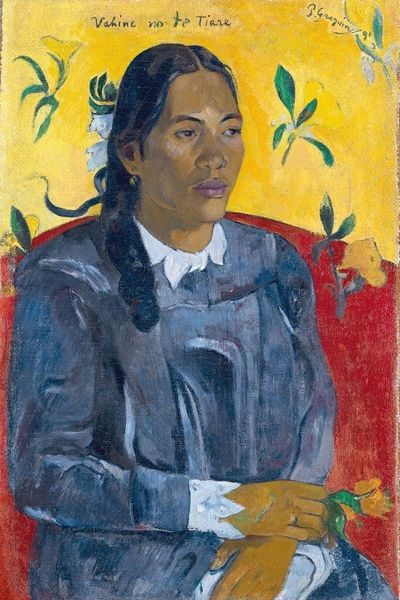
painting, oil-paint
#
portrait
#
painting
#
oil-paint
#
landscape
#
oil painting
#
genre-painting
#
realism
Copyright: Zinaida Serebriakova,Fair Use
Zinaida Serebriakova painted this portrait of an Italian peasant woman in 1926, using oil on canvas. It depicts a woman from the working class in her place of labor. The image's meaning lies in its visual codes and socio-historical associations. In the early 20th century, Italy was a society marked by regional disparities and class divisions. Serebriakova's choice to depict a peasant woman elevates a marginalized figure. The woman’s gaze, averted but steady, seems to meet the viewer on equal terms. The vineyard setting is significant. It subtly alludes to the importance of agriculture in Italian culture, and hints at a sense of national identity rooted in the land. To fully understand this artwork, it’s helpful to research the socio-economic conditions of Italy at this time. By exploring these contexts, we can better appreciate the artist's commentary on the social structures of her time. Ultimately, the meaning of art is contingent on its social and institutional context.
Comments
No comments
Be the first to comment and join the conversation on the ultimate creative platform.

